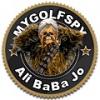The Sad Story of MacGregor's Demise
-
Who's Online 136 Members, 0 Anonymous, 951 Guests (See full list)
- Siamese Moose
- Hosel_Rockets
- DavidLPS
- alfriday101
- pruden6
- BallsLeon
- TJ Hall
- skraeling
- Slothsquatch
- russtopherb
- GolfSpy_APH
- GolfSpy_KFT
- LeakyValve
- aircoty
- Hobert
- barney_bogey
- LBC
- lAwbOunC
- Jean D
- bpricepiney
- Cfhandyman
- tharper1515
- Javs
- SirPrised
- WalkerH
- Seth.Tunstall
- Todd Early
- ejgaudette
- trendinglower
- Northern Monkey
- ce05krug
- cksurfdude
- josmi15
- Preeway
- Michael.Sandoval33
- Sho_yu76
- TCMP
- DarrenF
- Byrnzee
- peekps
- Bohnson
- ctg44
- nvizble1
- Parshooter36
- Prodigal Duffer
- och27
- GolfSpy AFG
- Tommy Smith
- Indy_Oz
- Hacker Milt
- Steve F
- Nima Enayati
- azstu324
- itsjustagame
- HikingMike
- Scooter 328
- ballhawk
- BigTiny
- Don Nagle
- cnosil
- John Houston
- Jake Fairbanks
- GT1885
- Rob Person
- chisag
- Jeff R
- William Gothard
- Brett Rabey
- ILMgolfnut
- Klorett
- Rearviewmirror
- Dcecilw
- MattWillGolf
- FallenSaber
- livininparadise
- lacou19
- dwade100
- Tom the Golf Nut
- Jmikecpa
- Mr Wilson223
- George Stark
- SteveGH7
- StrokerAce
- jazz15c
- BMart519
- 70445
- rslago
- Turbo-Dad
- Erin B
- PAR4MEPlease
- TomBomb51
- ole_gray1
- Irish-Assassin
- Lefty11
- Golf88
- SirIrish
- jswatson0917
- Rambada
- Max 123456
- HelloChaz
- A.M_Big.Poppy
- Girldad18
- Jim Shaw
- swansosa
- Bulldog
- Sweet56
- pauls
- GolfSpy_BEN
- Nick_D
- gavinski91
- Douglas Stefanson
- Mattkbray
- schmidtty
- Stephen355
- CFreddie
- Drdale2013
- David Leighton Reid
- BobBC78
- David brown
- mywong23
- fixyurdivot
- xOldBenKenobiX
- Grip
- pineneedlespro
- bcsykes
- Josh Parker
- Swaggy_H8
- WalkerR
- Willi
- Tskeeze
- DaveP043
- Tonkaboy
- Phillip L
- MDR3786
- Dan Dez
- Jkel


Recommended Posts
Join the conversation
You can post now and register later. If you have an account, sign in now to post with your account.